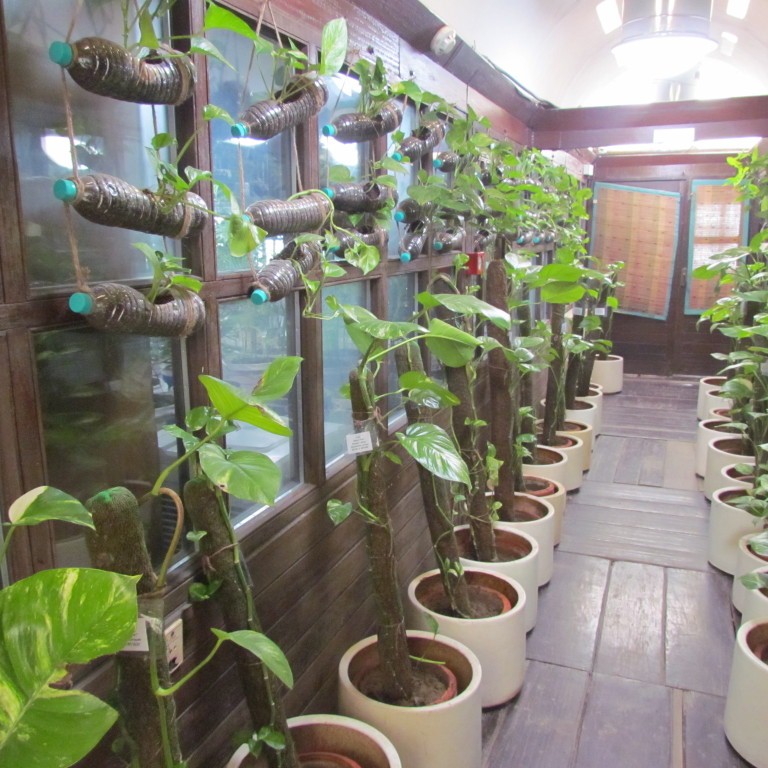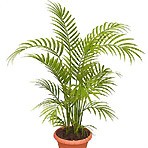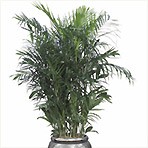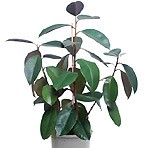 The greenery always gives a good feeling; it enhances the look of a house or office. Common indoor plants are good to fight against rising levels of indoor air pollution. NASA scientists are finding them to be useful in absorbing potentially harmful gases and cleaning the air inside homes, indoor public spaces and office buildings.
The greenery always gives a good feeling; it enhances the look of a house or office. Common indoor plants are good to fight against rising levels of indoor air pollution. NASA scientists are finding them to be useful in absorbing potentially harmful gases and cleaning the air inside homes, indoor public spaces and office buildings.
Buildings which have good amount of plants planted inside them have a healthy ventilation systems constantly invigorating them with air from outdoors after a filtration process that removes some large particles, such as pollen, from it. Once inside, this air is augmented by a large range of indoor plants. Some well-placed greenery brightens the space and also purifies the air. The plants are also helpful in creating a more relaxing, restful ambiance in the building. It reduces stress and tensions to great extent. In a 2008 study, Dutch researchers found that hospital patients with indoor plants in their rooms recovered faster from their illnesses and reported lower stress levels than patients without them.
Do you know that the indoor pollutants are airborne biological pollutants, carbon monoxide and nitrogen oxides, pesticides and disinfectants? These pollutants contribute to ‘sick building syndrome’, which causes symptoms ranging from allergies, headaches and fatigue through to nervous-system disorders and cancer. It may come as a surprise but air pollution levels indoors are almost always higher than outside. Even more surprising is that indoor plants have the ability to diminish high levels of most airborne contaminants.
Indoor plants add positivity besides great looking décor. There are some beautiful houseplants that are easy to take care of and effective at increasing oxygen and clearing out toxins for cleaner breathing air, some of these are approved by NASA. Try adding one to your each room at home and your work station in office.
Paharpur Business Centre:
 Established in 1990, in chaotic commercial hub of Nehru Place in Delhi id the Paharpur Business Centre with an exterior tall, grayish-white with rectangular windows spread over 50,000 square feet and six floors. When you step inside you are taken aback with the multitude of money plants that fill your vision. It is not an ordinary office.
Established in 1990, in chaotic commercial hub of Nehru Place in Delhi id the Paharpur Business Centre with an exterior tall, grayish-white with rectangular windows spread over 50,000 square feet and six floors. When you step inside you are taken aback with the multitude of money plants that fill your vision. It is not an ordinary office.
The Paharpur Business Centre boasts of being declared as the Capital’s healthiest working place from environment point of view in a city. As such Delhi is notoriously famous for being the most polluted city in the world. This building manufactures its own air that is supposedly of ‘mountain-fresh’ quality and free of any toxins. The building is house for 1200 plants such as areca palms and snake plants which are placed everywhere. There are 4 plants for every employee on an average. As per the CEO of Paharpur Business Centre Mr. Kamal Meattle, minimum 4 plants are required to supply quality breathing air for one person. He quotes a WHO (World Health organization) statistics that has found indoor air to be the second-biggest killer after blood pressure in India, claiming over 1.3 million lives every year. It seems Kamal Meattle was diagnosed with decreasing lung capacity in 1992. He was advised by the doctors to leave Delhi. But, he did an intense study and found this solution to overcome the air pollution.
The air inside this quiet building smells slightly medicinal and is completely still. It is only after some time that you realize why the gentle breeze and general hum of air conditioning units that are present in other offices or homes are missing here. It seems air conditioners are switched on only on the weekends to give the plants some rest.
The air that flows throughout the building is cultivated in a fascinating system set up on PBC’s roof: outside air passes through a scrubber that washes it with water to rid it of outside pollutants. This air is then circulated through a greenhouse that holds many plants such as areca palm, snake plant and money plants to eradicate formaldehyde, benzene, carbon monoxide and bacteria. Plenty of plants are creatively placed everywhere to allow as many as possible in the greenhouse besides the potted plants that jostle for space. You see plants curling downwards from the ceiling and stretching across the walls from layers of plastic bottles. These plants are cultivated using hydroponics; a method to grow plants using mineral nutrient solutions without soil. According to Mr. Meattle these plants heighten their oxygen-producing capabilities, and extend their life span.
Some most useful indoor plants are as following:
Palm Areca (Chrysalidocarpus lutescens)
 It is also called the “Butterfly Palm”. An upright houseplant that is somewhat vase shaped. Specimen plants can reach 10 to 12 foot in height. It prefers a humid area to avoid tip damage and requires timely pruning. When selecting an Areca palm look for plants with larger caliber trunks at the base of the plant. Plants that have pencil thin stems tend to topple over and are quite difficult to maintain.
It is also called the “Butterfly Palm”. An upright houseplant that is somewhat vase shaped. Specimen plants can reach 10 to 12 foot in height. It prefers a humid area to avoid tip damage and requires timely pruning. When selecting an Areca palm look for plants with larger caliber trunks at the base of the plant. Plants that have pencil thin stems tend to topple over and are quite difficult to maintain.
Lady Palm (Rhapis excelsa)
This plant is famously known the “Lady Palm.” This durable palm species adapts well to most interiors. It is one of the easiest palms to grow, but each species has its own particular environment and culture requirements. The “Lady Palm” grows slowly, but can grow to more than 14’ in height with broad clumps often having a diameter as wide as their height.
Bamboo palm (Chamaedorea seifrizii)
 It is also called the “reed palm”, this palm prefers bright indirect light. New plants will lose of some interior flora as they acclimate to indoor settings. This plant likes to stay uniformly moist, but does not like to be over-watered or to sit in standing water. Indoor palms may attract spider mites which can be controlled by spraying with a soapy solution.
It is also called the “reed palm”, this palm prefers bright indirect light. New plants will lose of some interior flora as they acclimate to indoor settings. This plant likes to stay uniformly moist, but does not like to be over-watered or to sit in standing water. Indoor palms may attract spider mites which can be controlled by spraying with a soapy solution.
Rubber Plant (Ficus robusta)
 This plant grows very well indoors, preferring semi-sun lighting. Avoid direct sunlight, especially in summer. Young plants may need to be supported by a stake. The Ficus grows to 8’ with a spread of 5’. Wear gloves when pruning, as the milky sap may irritate the skin. It requires water thoroughly when in active growth: allow the soil to become fairly dry before watering again. In winter keep slightly moist.
This plant grows very well indoors, preferring semi-sun lighting. Avoid direct sunlight, especially in summer. Young plants may need to be supported by a stake. The Ficus grows to 8’ with a spread of 5’. Wear gloves when pruning, as the milky sap may irritate the skin. It requires water thoroughly when in active growth: allow the soil to become fairly dry before watering again. In winter keep slightly moist.
 To add beauty and gaiety to your interior décor you can opt for planters that are hanging for the ceiling. Hang them from the ceiling to preserve floor space and allow them to purify the air and to add freshness and color to the décor. They feature a reservoir that gradually feeds water to the roots. Classical hanging planters are also a nice way of decorating your home. Hang them from the ceiling or beams and allow them to showcase all their beauty. Use them as alternative ways of dividing the spaces and opt for climbers or any other plants that you like.
To add beauty and gaiety to your interior décor you can opt for planters that are hanging for the ceiling. Hang them from the ceiling to preserve floor space and allow them to purify the air and to add freshness and color to the décor. They feature a reservoir that gradually feeds water to the roots. Classical hanging planters are also a nice way of decorating your home. Hang them from the ceiling or beams and allow them to showcase all their beauty. Use them as alternative ways of dividing the spaces and opt for climbers or any other plants that you like.
The best part of having indoor plants is that it is joy to see them grow!!!












































